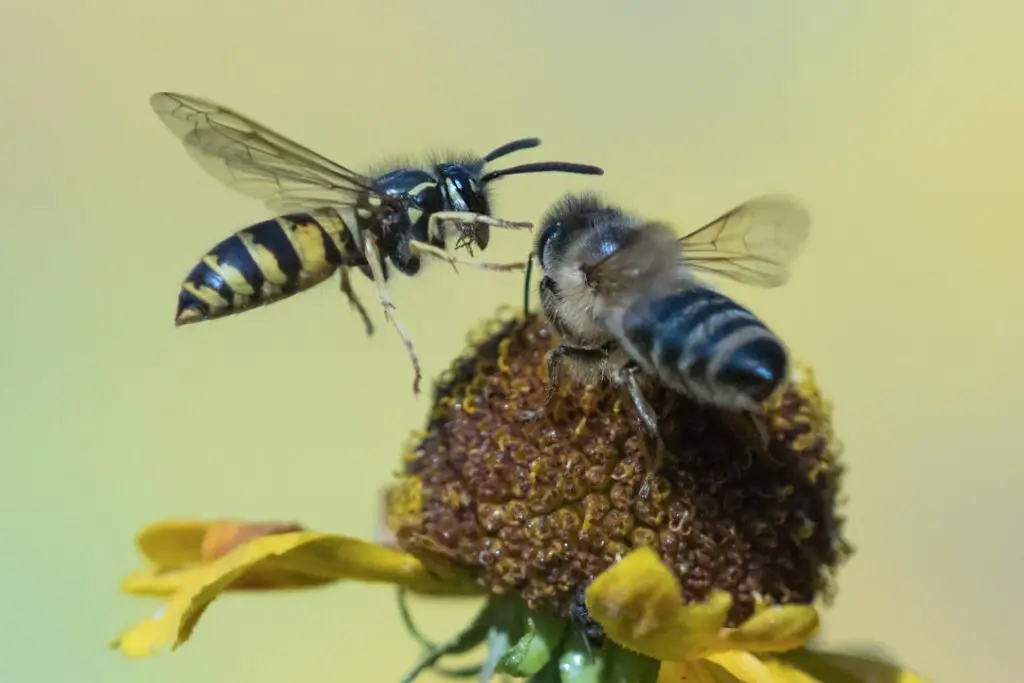Yes, wasps are attracted to bees and their nests because they see them as a food source. From sweet honey to bee larvae, it’s a calorie-rich reward for any wasps that can successfully invade a hive.
But that’s not the whole story. For the most part, bees and wasps get along in relative peace in your garden.
So what turns these normally harmonious insects into sworn enemies that will fight to the death? Let’s jump into the fascinating world of bees and wasps to find out.
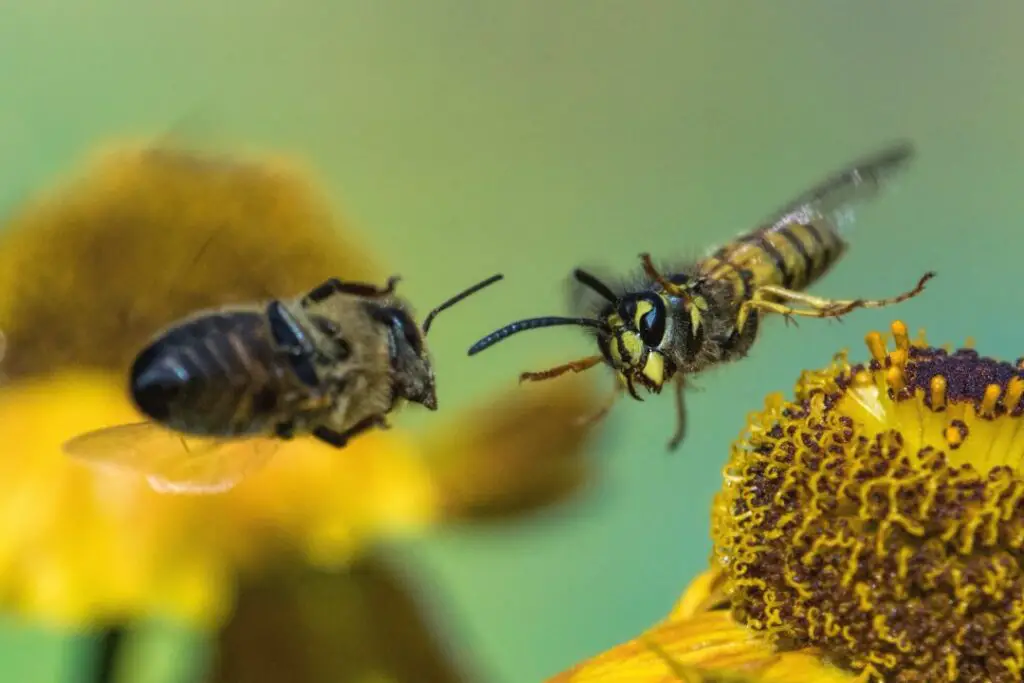
Why Do Bees Attract Wasps?
Individual bees collecting nectar and pollen won’t usually attract the attention of passing wasps. But a bee nest or hive is an entirely different story.
Species like yellow jackets, hornets, and European wasps seek out honey bee colonies to dispatch the residents and steal the honey and larvae.
Dead bees and young broods are the perfect food for the wasp larva back at the nest.
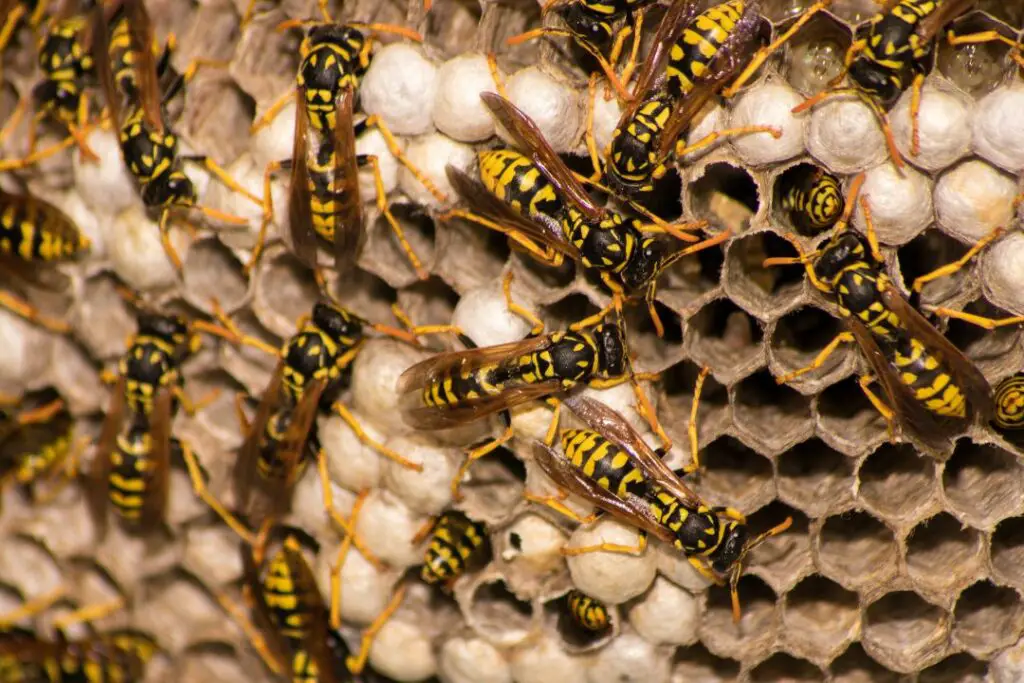
Do Wasps Kill Bees?
Particularly aggressive species like yellow jackets and hornets engage in skirmishes with bees, especially during late summer and early autumn.
This is when wasp colonies peak, and food sources become scarce. As a result, bees and their valuable resources become much more appealing to wasps on the forage for food.
While it’s easy to vilify wasps for their raiding behaviours, it’s essential to understand their perspective. For wasps, it’s all about survival. A single wasp can kill multiple bees, swiftly decapitating them and taking the thorax back to feed its young.
This might sound ruthless, but it’s simply about nourishing the next generation of wasps. A real-life example of this can be seen in European gardens where Vespa crabro, the European hornet, occasionally hovers around beehives during late evenings.
This hornet will catch a returning bee, dismantle it in mid-air, and then fly off with the most nutritious parts, leaving beekeepers with a scene reminiscent of a horror movie.
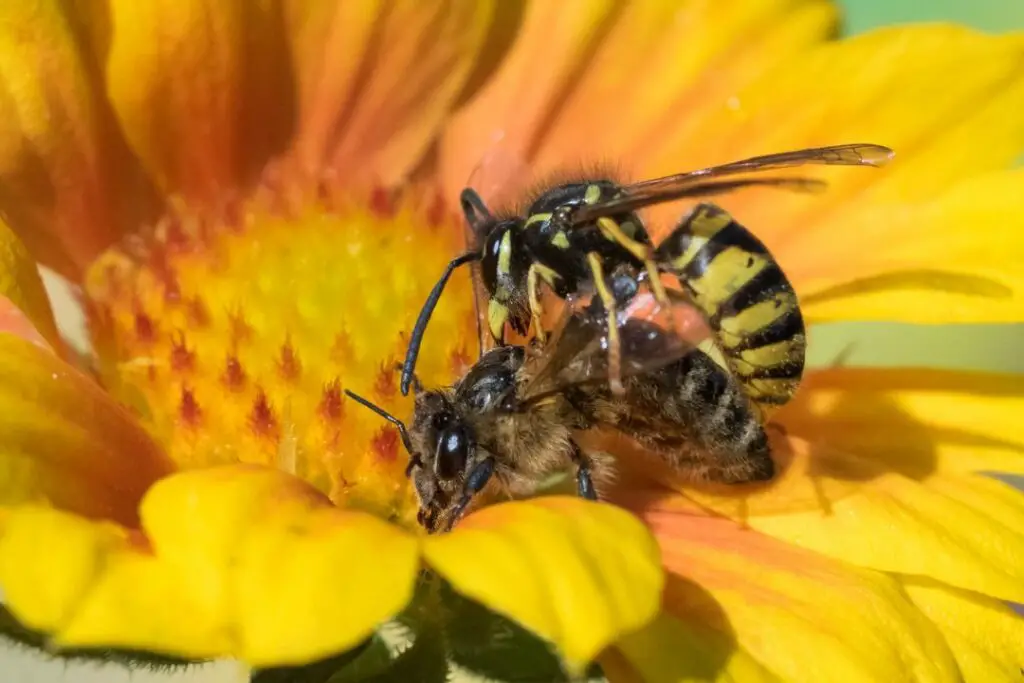
Are Wasps Attracted To Bees Nests?
At a fundamental level, bee nests or hives represent a bit of a feast for wasps. There is honey, a sweet energy-dense treat, and bee larvae and pupae, protein-rich delicacies for wasps.
Wasps are always looking for protein sources, especially during breeding season. The bee larvae found in the hive are an invaluable source of protein, critical for feeding growing wasp larvae.
In the waning weeks of summer, as food becomes less abundant, you might observe more wasp activity around bee hives and nests.
The European paper wasp is notorious for this. They scout around bee hives, seeking opportunities to slip inside and pilfer honey or grab a juicy, calorie-rich bee larva.
It’s essential to note that not all wasps have a penchant for bee hives. Many species of wasps are solitary and have diets that don’t overlap with what bee hives offer.
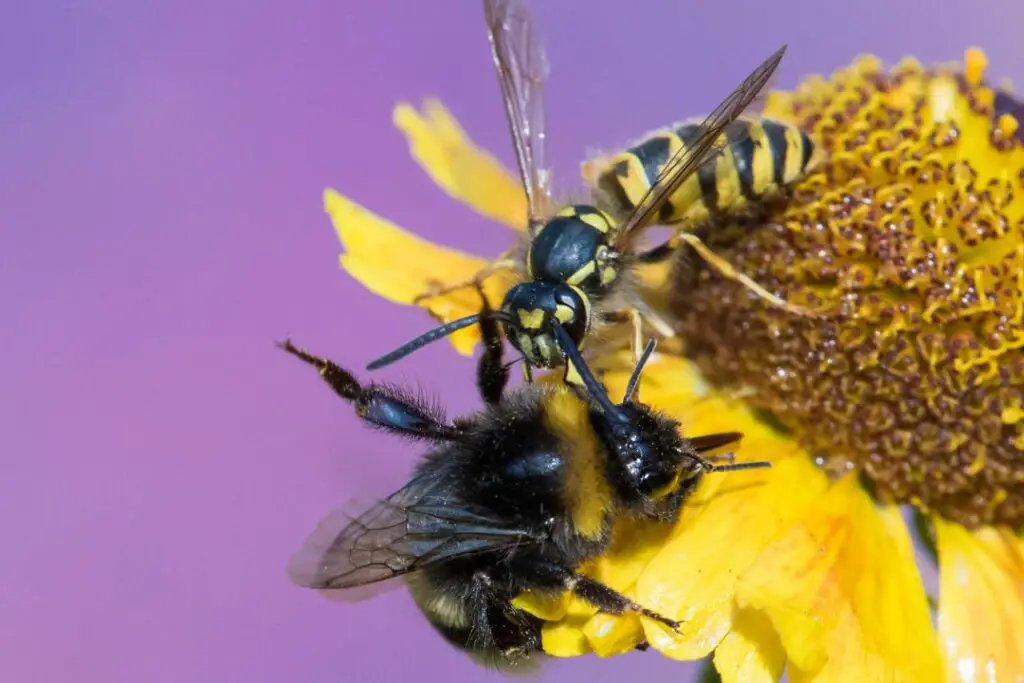
How Do Bees Stop Wasps From Stealing Their Honey & Larvae?
Protecting their home and resources is of utmost importance to bees. After all, the colony’s survival hinges on the hive’s safety and the integrity of its honey supplies. So, when faced with opportunistic invaders like wasps, bees have evolved a range of tactics to keep them at bay.
Bee balling
One of the fascinating defence mechanisms bees employ is ‘balling.’ When a wasp intrudes into the hive, a group of bees will cluster around it and begin vibrating their bodies.
This concerted effort raises the temperature and suffocates the intruder, effectively cooking the wasp within the bee-ball. The Japanese honey bee, for instance, is known to utilize this tactic against the Japanese giant hornet, a particularly fearsome insect predator.
Guard bees
At the hive’s entrance, you’ll often find ‘guard bees,’ whose sole purpose is to monitor and restrict access. These diligent sentinels inspect each incoming bee to ensure it belongs to the colony. If a wasp or any other intruder tries to gain entry, the guards act, physically blocking and confronting the threat.
Hive fortification
Bees are also adept builders. They often reduce the size of their hive entrance, especially when they sense an increased threat from wasps. A smaller entrance is easier to defend and gives the guard bees better control over who enters and exits.
Alert pheromones
Bees communicate using pheromones. When a guard bee detects a threat, it releases a pheromone that alerts the colony. This chemical signal mobilizes other bees to assist in defending the hive.
Stingers as weapons
A bee’s stinger is a formidable weapon, and they aren’t hesitant to use it when the hive’s safety is at stake. Wasps, aware of this lethal weapon, are often wary of an aggressive confrontation unless they’re in more significant numbers.
The age-old battle between bees and wasps is a game of strategy and survival. While wasps have their predatory instincts and tactics, bees are not defenceless. They’ve evolved intricate and effective mechanisms to protect their colony, ensuring their precious honey and larvae remain safe from marauding wasps and other unwanted visitors.
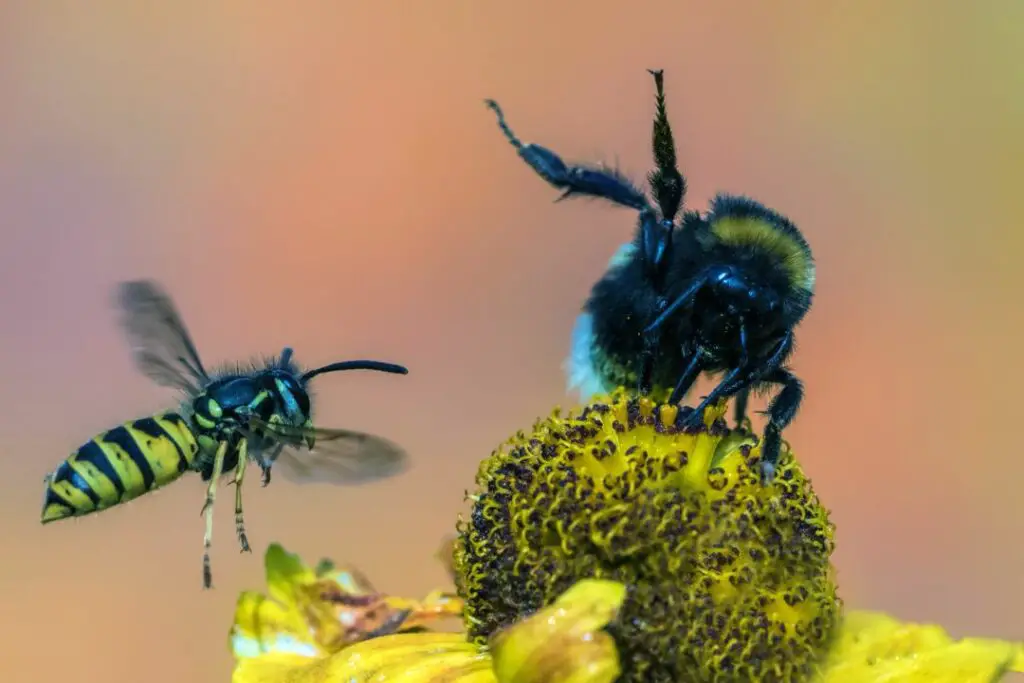
What Else Attracts Wasps?
Apart from bees, wasps are also attracted to a variety of things. Knowing what attracts wasps can help us prevent them from building their nest in our gardens or homes. Here are some things that attract wasps:
Sweet and Sugary Foods
Wasps are attracted to sweet and sugary foods like fruits, nectar, and flowers. They are also attracted to sugar, water and soda. Keeping food and drinks covered and cleaning up spills immediately is essential to prevent wasps from being attracted to them.
Protein-rich Foods
Wasps are also attracted to protein-rich foods such as meat, fish, and pet food. Leftover meat can also attract wasps. Disposing of food waste properly and keeping garbage cans sealed is essential.
Insects
Wasps are predators and are attracted to other insects, such as aphids and flies. They also feed on crops and can be beneficial in controlling pests in gardens.
Flowers
Wasps are attracted to flowers, especially those with a sweet scent and bright colours such as yellow and white. They feed on the nectar and pollen of flowers. Some flowers that attract wasps include Queen Anne’s Lace, Yarrow, and fruit trees.
Scent
Wasps are also attracted to scents such as perfume and peppermint. It is best to avoid wearing strong perfumes or using scented products when outdoors during the summer.
Shelter
Wasps need shelter to build their nests. They prefer eaves, sheds, and trees to build their nests. It is essential to keep these areas wasp-proof by sealing cracks and openings.
Late Spring and Summer
Wasps are most active during late spring and summer when the weather is warm. They are more likely to be attracted to food and shelter during this time.
By knowing what attracts wasps, we can take steps to prevent them from building their nests in our gardens or homes. Maintaining good garden biodiversity and keeping food and garbage sealed is important to prevent wasps from being attracted to them.

